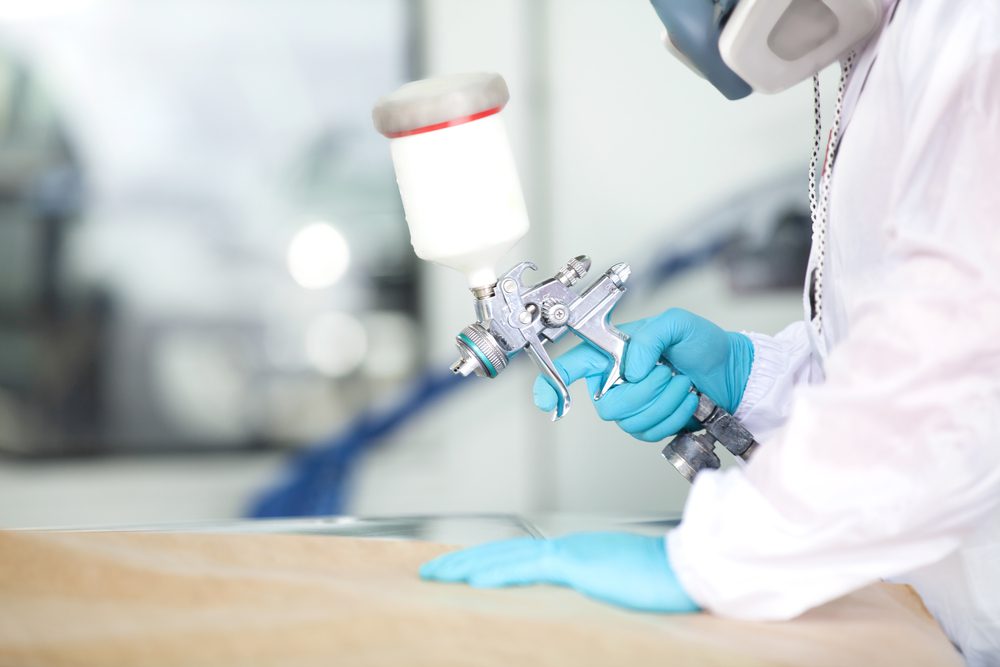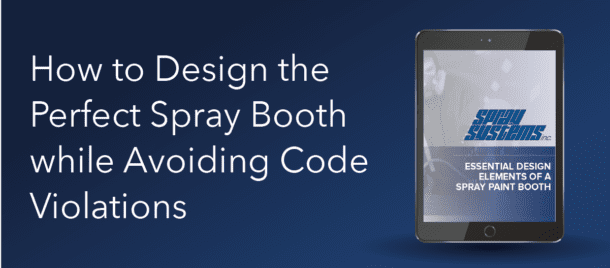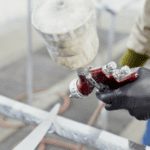Read Time: 2m40s
Summary:
- Routinely cleaning your booth and its air filters can help make sure your spray booth remains code compliant while preventing potential risks of fire.
- Move spark-producing devices away from your spray booth at a safe distance indicated in applicable local and federal codes.
- Ensure your booth has fire suppression equipment available and conduct routine equipment inspections.
- Conduct an analysis on your booth to make sure the airflow is compliant to employee safety and environmental regulations.
Confirming that your paint spray booth is compliant with local and federal regulations is no easy task. Paint spray booths must comply with local building codes, fire safety regulations, occupational health and safety laws, and volatile organic compound (VOC) limits. While some of these codes are national, others vary between states.
Some requirements for VOC levels also differ depending on which type of paint is sprayed. With multiple variables in play that can affect compliance, whether you have a liquid or powder booth installed, it is always beneficial to work with an established paint spray booth manufacturer to confirm that your current setup meets regulations. Our expert design team at Spray Systems can properly analyze the elements and overall functionality of your booth, and modify any existing equipment to confirm that it is not within violation of necessary regulations.
Fire Safety Compliance
While fire safety standards may differ depending on your assembly line size or paint type, there are some basic modifications that can help make your paint spray booth code compliant. Some examples are shown below.
Clean and maintain your booth regularly
Many regulations concern the buildup of hazardous paint chemicals, which can be hazardous. Regularly cleaning filters and the booth itself can minimize buildup, and, therefore, potential fire threats.
Remove ignition sources
Some paints are volatile, but they still need a spark or heat to ignite. Fire safety demands that sources of ignition, or spark-producing devices, such as light fixtures and switches, be installed and maintained at distances from the booth as required by local and federal codes.
Install fire suppression equipment
Although many laws concern fire prevention, others concern damage control if one does break out. Two common fire suppression measures used for spray booths are automatic sprinklers and readily available fire extinguishers to mitigate damage and injury in the workplace. Regulatory equipment inspections are key to ensuring your booth does not become at risk of violation.
Employee Safety Compliance
A code-compliant paint spray booth is designed to keep employees safe and healthy. Many laws focus on how much airflow is sent through the paint spray booth. Properly designed spray booths stay below these limits. However, an analysis will likely need to be completed to ensure your current booth is compliant with the specific paints used in your production. Modifications such as additional fans, may be installed to make necessary accommodations.
Environmental Compliance
Minimizing damage to the environment is also factored into the design of a code-compliant booth. A properly designed booth has the appropriate filters installed for the type of paint used. Spray Systems paint spray booth experts can confirm if your booth has the right filters for your setup. If the system is designed properly, there are still a few additional steps you can take to confirm compliance – clean and replace filters regularly, and properly dispose of paint waste.
If your paint spray booth isn’t code compliant, there are many cost-saving modifications that our trusted team of professionals at Spray Systems can recommend to maximize your bottom dollar. With premier knowledge in various industry regulations and operations, we can provide accurate steps and action plans that fit both the needs of your production line and the law. Contact a spray booth adviser today for expert advice you can trust.





